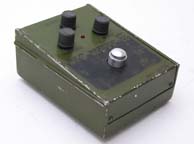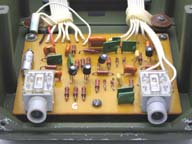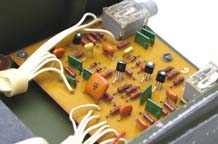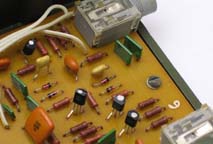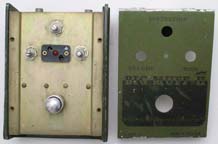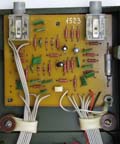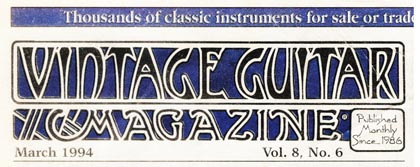THE BIG MUFF π - A HISTORY OF ALL VERSIONS - Part 2
Click on any Big Muff in the image below to go directly to that section
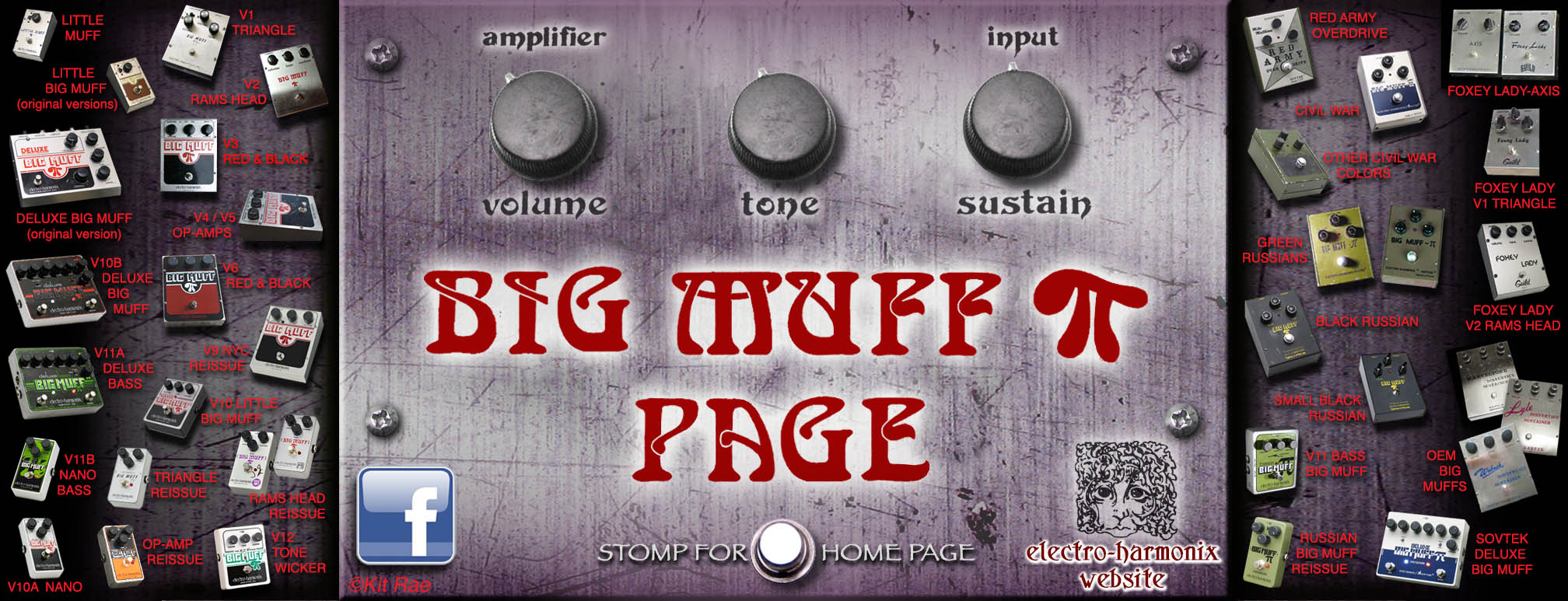
VERSIONS 7 - 7B (1990 - 1994)
NOTE: This website is constantly updated as new information becomes available. Version, Edition, and Revision numbers listed here are not actual Electro-Harmonix identifiers. They are my categorizations, for identification purposes only. Last update April 2011. Permission required to repost any information from this site in any ebay listing. Website and contents ©Kit Rae.
NEW SENSOR AND THE SOVTEK RED ARMY OVERDRIVE
After Mike Matthews' Electro-Harmonix had gone bankrupt for the second time in the USA, he turned to the contacts and sources he had made in Russia back in 1979 to start up new business in the mid 1980s. After Perestroika the Soviet military industrial complex had collapsed in Russia many of the former military factories were now out of work. They were desperately looking for any type of business in the consumer goods market. Matthews saw an opportunity to buy inexpensive integrated circuits (ICs) from them, and later vacuum tubes, to sell around the world. Selling ICs got him back on his feet and he started a new company in 1988, New Sensor Corp, which included a distribution center in the USA.
In 1989 he created a new brand of amplifier vacuum tubes under the label Sovtek (the name combines words Soviet and technology/tekhnologiya), contracting them to be made in the 53-year-old ExpoPul factory in Saratov, Russia. New Sensor supplied tubes to many of the top amplifier makers at the time, like Mesa Boogie, Marshall, Peavey, and practically all of the tubes used by Fender. In 1998 Matthew's New Sensor company purchased the entire ExpoPul vacuum tube factory, which was the largest tube maker in the world at that time, and Mike stopped selling ICs. New Sensor went on to make tubes for such brand names Tungsol, Svetlana, and Mullard, among others. By 2001 Matthews had reacquired the Electro-Harmonix name, and New Sensor brought a line of high quality E-H branded vacuum tubes to the market. His girlfriend, Irusha (who's father was co-inventor of Russia's hydrogen bomb) ran all of his operations in Russia.
In the time since Electro-Harmonix had ceased operations Matthews had seen the collector value of his old 1970s E-H effect pedals soar. People back in the United States were suggesting that he bring them back to the market. It was not long before a few of the more popular E-H pedals were resurrected, beginning with the E-H flagship, the Big Muff Pi. This time it was entirely made in Russia. I believe there are almost as many "versions" of these Russian Big Muffs as there are American made versions, although far less circuit variants. Around 1990 Matthews was in St. Petersburg (formerly Leningrad), a political and cultural center of russia for over 200 years. It was there that he hooked up with two colonels who operated a small factory that had made training equipment for the military. Since the equipment they made incorporated electronics, it was not a big stretch for them to make the transistion to fuzz pedal circuits. Matthews discussed with them the idea of having a Big Muff made in Russia, but New Sensor did not have a lot of money at the time to invest in new tooling to make one. The colonels liked the idea and agreed to pay for all of the set up costs. Matthews gave them an original circuit diagram and they completely redesigned the circuit board and enclosure. They came up with a rugged, military looking pedal, with a reinforced top plate under the enclosure box cover, and large metal foot switch casing, giving them the appearance of being very sturdy. The actual circuit schematic was not identical to any USA made version that I have ever seen.
The first of the Russian made pedal from New Sensor was the Red Army Overdrive (RAO), produced circa 1991-'92. The risqué name appealed to US customers who found it very cool to own a pedal made in Russia, and the myth circulated later that these were made from scrap Russian military parts did not hurt either. The military style wood crate with Russian lettering that these were packed in just added to the mystique. Contrary to popular belief, these Russian made pedals were not made with spare tank parts, ammunition boxes, land mines (!), or any other junk-scrap military weapons. They were made in a former Russian military equipment factory. Some of the circuit board components may have been stock that was made or purchased during the Cold War era, but that is as close to military parts as it got.
Technically the RAO is a Big Muff, even though it was not actually called a Big Muff. The Sovtek Big Muffs were the exact same pedal, just with different graphics. This is probably the rarest of all the Russian made Muffs due to the ultra cool graphics on the top panel and the small number that were manufactured.
CONTINUE TO THE RED ARMY OVERDRIVE PAGE HERE, WITH MORE INFO AND PHOTOS OF BOTH VERSIONS
THE SOVTEK GREEN AND GRAY "CIVIL WAR" RUSSIAN BIG MUFF π - VERSION 7
Circa 1992-1993
Circuit Board Number: BM - 01.00.000
Circuit Designer: Based on Bob Myer's original circuit
True Bypass: No
Power: 9V battery only. To connect to a standard Boss type AC power supply, use a 9V battery adaptor like the 1 Spot CBAT. See POWER section below.
Enclosure Size: 6 1/2" x 4 3/4" x 2 3/4"/ 165mm x 118mm x 70mm (not including rubber feet)
Packaging: Wood crate box with Russian lettering
Place of Manufacture: St Petersburg, Russia
I call these Russian made Big Muffs Version 7, since they were technically the 7th incarnation following the last USA made version. There are many color/graphics variations and slight design changes to the Russian Big Muff enclosures, but rather than give each of these an individual version number, which would be very confusing, I have decided to group all of these 1990s era Muffs under the V7 category, with letters loosely denoting the notable changes. The order of production for the V7 variations was determined by original owner purchase dates, New Sensor marketing materials, circuit board changes, enclosure box changes, battery door cover changes, and knob types used. The order of production is still debatable. Some collectors think the different colors and different box graphics were made simultaneously and order of production should be determined by knob types used. That is not logical when you look at the different enclosure box types, different circuit boards, and battery door covers. Those are better indicators of the production order evolution. There also seems to be a logical order to the knobs used, when it is considered that the gray knobs were made in two styles at different times. The first units appear to have been made in late 1991, and by 1992 E-H was sending samples to Guitar magazines along with a letter naming several retailers who had placed orders for them. It also mentionins the new line of Sovtek made amplifiers which were on the market in the Fall of 1992.
The Sovek marketing materials described the Big Muff like this: Original Sound and Circuit As The Classic Big Muff Distortion/Sustainer But With Low Noise Military Transistors. Relied On By Jimi Hendrix For His Smooth, Mellow, Supple Electric-Lady Sound. Comes In A Wooden Box Branded In Russian "Electro-Harmonix/Sovtek".
This pedal is often mistakenly called the Big Muff II, but the II was actually intended to be the Pi symbol. It was released approximately a year after the Mike Matthews Red Army Overdrive (RAO) pedal, and Sovtek Muffs with this color are very rare. It is the exact same pedal as the RAO, made in St. Petersburg, but with graphics changes. It also appears to have been made simultaneously to the RAO for a year or more, before the RAO was phased out. In 1991 Mike Matthew's had reacquired the Electro-Harmonix trademark, allowing him to once again make an official Electro-Harmonix Big Muff. It was esentially the same product as the RAO, with different silk screened graphics, and shipped in the same military style wood crate with Russian lettering. This version is also the same pedal as the later blue and gray colored Civil War (versions 7A and 7B). I believe that nickname actually started with the blue and gray version, but they all ahev the same graphic design and same circuits.
GRAPHICS AND COLORS - The Red Army Overdrive name was changed to the words BIG MUFF, using the same font. ELECTRO-HARMONIX was added next to SOVTEK. MADE IN RUSSIA was changed from Russian to English letters, though the Russian letters would later return on the green Sovtek Muffs. The first production was printed with ROSSIA, then later changed to RUSSIA. The Russian dove star graphic was kept in the same location as on the Red Army version. Some people have called this the Big Muff II, confusing the mathematical symbol for Pi for the roman numeral II, but it was intended to be the Pi symbol, as indicated by the horizontal line above the II. The enclosure bottoms were painted in the same green or battleship-gray colors as the Red Army Overdrive. The top panel was anodized a silver-gray, or "champaign" color, with dark blue or dark green printed graphics. There were also some with a silver-gold top color, but I have only seen a few examples of those. Often there is a gold colored "halo" around the printed graphics that appears over time, caused by the chemicals in the paint slowly discoloring the anodizing. That is not the same as the original gold-silver colored anodizing I am referring to, but people have called this a "gold" version as well.
CONTROLS / KNOBS - Identical controls to the Red Army Overdrive. The pots were often mounted as such that none started with zero in the same place. Two knob types were used, also the same as seen on the Red Army Overdrive. One was a plain black plastic "hockey puck" shape with indicator marks, similar to the USA Big Muff hockey puck knobs, but much smaller and with better tooling. The arrow-top plastic knobs were tapered, prone to breaking and poorly designed. Some were molded in black, but most were gray. There were circular indicator arrows molded into the knob tops, but it was almost impossible to use these as indicator marks. There were two different molds for the arrow-top knobs, each with a slightly different shape. These were the early ones that tapered thinner at the top. The pots were stamped metal cases or green potted cases like the Red Army Overdrive.
CIRCUIT - Identical to the two different Mike Matthews Red Army Overdrive versions, and the Civil War version 7A/B circuits detailed in the entries below.
- PCB board #BM - 01.00.000.
- Transistors were low noise, Russian E type, typically NPN KT3102E 9108 transistors (NPN 2N5089 or 2N5210 near equivalents). Some had unmarked black plastic transistors in TO92 packages with white and green dots marked on the top and sides.
POWER - Power was from a 9V battery only. A red LED light shows when the circuit is on. To connect to a standard Boss type AC power supply, use a 9V 100mA battery adaptor like the 1 Spot CBAT. If you intend to add a standard 9V power jack that works with standard negative tip power supplies, you can find out where to wire the + and - wires by looking at the wiring diagram for your version, or simply follow the red(+) and black (-) wires from the battery snap.
ENCLOSURE BOX - Cast aluminum bottom panel and a sheet metal top panel. There were four outer box screws. Four more screws under the top panel held another steel plate in place that held the pots and covered the circuit board. This was a very sturdy case, built like a tank, though that was the only quality part of this Muff. It was made with cheap plastic input and output jacks, which were soldered directly to the circuit board, with no nut to secure them to the box. They simply poked through two silver rimmed holes in the box. They were prone to coming loose or breaking. The battery door was plastic, fit loosely, and was prone to falling out. Most 1990s Russian Muffs are missing the door. The enclosure had four rubber feet on the bottom, also prone to falling off over time.
CLONES OR SIMILAR PEDALS - Stomp Under Foot CWM / Civil War Fuzz, Blackout Effectors Musket, Montgomery Appliances Civil War Fuzz, Wren & Cuff Box of War.
THE SOUND - Identical circuits and sound as the two the Red Army Overdrive editions, just with different graphics and colors. The version with 430pF feedback/filter caps sounds very close to the blue and gray boxed Civil War (version 7A) Big Muffs that would come later, and had almost identical circuit component values. The version with 500pF feedback/filter caps sounds similar to the 2nd and 3rd edition V7C Green Russian Big Muffs. They had a slightly grittier, less smooth tone.
Overall the V7 sound was a mix between the V1 and V3 Muffs, but with a fatter bottom end, brighter and less scooped mids, and less gain. All of the 1990s Sovtek Muffs (Civil Wars, Green Russians, Black Russians) had very similar component values, and had very similar sounds to each other, but the Civil War tone was special. It was very dark and bassy, but with a smooth and clear mid range, and a very musical clarity that stands out in a live band mix slightly better than most USA made Big Muffs. These are a favorite among bass players due to the low gain and huge, bass friendly bottom end they produce. The bass and treble of the tone varies slightly from unit to unit. Listen to Pink Floyd's Pulse live album for some great examples of lead tones using this pedal. The Black Keys and Sonic Youth have other examples of this sound.
CLICK A PHOTO TO ENLARGE
Shown above - A promotional Russian Big Muff and letter sent to Guitar Magazine in July 1992 by Mike Matthews, promoting "One of the first reissues of the legendary Big Muff Pi". Identical to the Red Army Overdrive (RAO), only with different graphics. Knobs were similar to the "hocket puck" knobs used on the last USA made Big Muffs, only smaller. They were arranged in the same positions as the V1 Triangle Big Muffs, with a similar enclosure size (thanks to Jeff / Afrodrew for permission to use the photos).
Shown above - Early 1992 promotional and some production Big Muffs were silk screened with made in ROSSIA, rather than RUSSIA. This was corrected in production.
Shown above - Examples of V7 Civil War Big Muffs from 1992. The one on the bottom shows after market knobs.
Shown above - Another V7 Civil War Big Muff, this time with a circuit identical to the first edition Red Army Overdrive. The only difference between the circuits are where you see each of the three large brown rectangular shaped 430pF filter caps in the first edition shown above, you find two 1nF caps in their place on the second edition circuits. Those two 1nF caps in series are equivalent to 500pF, which makes for a smoother, slightly less gritty sound than this version.
Shown above - A rare V7 Civil War Big Muff with green bottom and green silk screen ink on top, rather than the more common dark blue shown on the right.
Shown above - A few odd V7 Big Muffs with gray box bottoms and yellow-gold colored tops. All had the arrow-top knobs. The knob colors varied from black to gray, and these knobs tapered thinner at the top than the later ones. The anodized top shown on the left had a yellowish cast. Note the example on the far right is actually a silver anodized color, but the ink has solwly created a gold-green colored halo around the graphic sover time. Soemtimes this halo appears gold or brown colored, but the original pedal was silver when new.
THE SOVTEK BLUE AND GRAY “CIVIL WAR” RUSSIAN BIG MUFF π - VERSION 7A
Circa 1993-1994
Circuit Board Number: BM-01.00.000, BM-1-01.00.000
Circuit Designer: Based on Bob Myer's original circuit
True Bypass: No
Power: 9V battery only. To connect to a standard Boss type AC power supply, use a 9V battery adaptor like the 1 Spot CBAT. See POWER section below.
Enclosure Size: 6 1/2" x 4 3/4" x 2 3/4"/ 165mm x 118mm x 70mm (not including rubber feet)
Packaging: Wood crate box with Russian lettering
Place of Manufacture: St Petersburg, Russia
These 7A versions were the same as the Version 7 Sovtek Big Muff described above, made in St. Petersburg, but with the more common color schemes. This version has been nick named the Civil War model in the U.S. due to its colors, and possibly the old west font used. During the U.S. Civil War (1861-1865) the Confederate Army uniforms of the South were gray, and the Union Army uniforms of the North were blue. The Civil War armies were sometimes called “The Blue and the Gray”, and the Civil War Big Muff nickname came from the blue box/silver-gray top/blue ink, and the gray box/silver-gray top/blue ink color schemes. An odd American nickname for a Russian made pedal, but the name has stuck. As mentioned earlier in this section, contrary to popular belief, these Russian Big Muffs were not made with Russian spare tank parts, ammunition boxes, land mines(!), or any other junk-scrap military weapons. They were made in a former Russian military electronics factory, so some of the circuit board components may have been made or purchased during the Cold War era, but that is as close to military parts as it gets. They shipped in the same military style wood crate with Russian lettering as the Mike Matthews Red Army Overdrive. This is also sometimes called the "blue and white" Big Muff or, or mistakelny called the Big Muff II.
GRAPHICS AND COLORS - Same graphics as the previous vrsion, only with color changes. The bottom panel was painted blue or battleship gray color and the top panel was a silver anodized metal color with dark blue graphics. The blue graphic color varied. The paint was very poor quality and chipped and scratched very easily. Some people have called this the Big Muff II, confusing the mathematical symbol for Pi for the roman numeral II, but it was intended to be the Pi symbol, as indicated by the horizontal line above the II. Often there is a gold or brown colored "halo" around the printed graphics that appears over time, caused by the chemicals in the paint slowly discoloring the anodizing. This has led people to refer to the color as yellow or golden, though the original pedal was not this color when new.
CONTROLS / KNOBS - Several different knob shapes were used during the production runs. I have seen some with gray, tapered arrow-top knobs like the previous Russian Muffs, black tapered arrow-top knobs, and black dimple-topped knobs with ridged sides. The knobs used do not seem to correspond with the order these pedals were produced. It is hard to say why, but I assume there were availability issues in Russia, so if one knob supplier was out of stock during a particular production run, E-H may have purchased different knobs from another supplier. Also keep in mind that some Sovtek Muffs being sold have had the knobs replaced with aftermarket, non original knobs. However, all of the knobs pictured below are actual production knobs. There were also at least three different large foot switches used, with varying sizes and shapes.
ENCLOSURE BOX - Identical to the previous version. Cast aluminum bottom panel and anodized sheet metal top panel. There were four outer screws. Four more screws under the top panel held another steel plate in place that held the pots and covered the circuit board. The finish and mold cleanup on the box bottom was typically very rough. The anodized surface of the top panel was sometimes not sealed properly leading to very ugly corrosion patterns, making some of these Big Muffs appear to have actually been in the Civil War! These look like scuff marks, almost mold-like in pattern, but they are actually a form of corrision. The input and output jacks, which were soldered directly to the circuit board, made of cheap plastic with no nut to secure them to the box. They simply poked through two silver rimmed holes in the box. After time the vibration and movement of these jacks often caused them to lift the circuit trace from the pcb board, resulting in the sound cutting in and out. These had four rubber feet on the bottom which were prone to falling off. The battery door was plastic, poorly engineered, fit loosely and was very prone to falling out.
CIRCUIT - Identical to the first edition Red Army Overdrive.
- PCB board #BM-01.00.000, later changing to #BM-1-01.00.000.
- Transistors used were NPN Silicon, Russian E type, either in a metal can TO18 style case, or black plastic, half-cylinder TO92 cases. Typically the T018 cases were marked KT3102E 9108 (NPN 2N5089 or 2N5210 near equivalents). The TO92 packages had white and green dots marked on the top and sides.
- Among the Big Muffs with TO18 cased tranys, there were typically four KT3102E's, though sometimes there were mixes of two KT3102E and two 5102E transistors in the TO92 cases. I assume one set was low gain and one set high. All of the T092 cased tranys I have seen are unmarked. Replicas I have played that sound nearly identical were made with 2N5088 or 2N5089 tranys.
- Dual feedback/filter capacitors in each of the first three circuit stages, usually unmarked, but each having a value of 1nF/1000pF. Those two caps in series are equivalent to 0.5nF/500pF, but sometimes a simgle 500pF cap would be used in each of the three places and a jumper wire would bridge the holes for each of the missing caps. That large 500pF feedback/filter value would remain on all Russian Muffs going forward, until it was changed to a single 470pF cap for the second edition Green Bubble Font Russian (Version 7C).
- The pots were the familiar green potted style, though some were made with the stamped metal cases like previous editions.
- Capacitors were almost alwasy film, although some flat, rectangular ceramic caps (red or green) were used. No electrolytics were used.
- Resistors were metal film with some carbon film used.
POWER - Power was from a 9V battery only. A red LED light shows when the circuit is on. To connect to a standard Boss type AC power supply, use a 9V 100mA battery adaptor like the 1 Spot CBAT. If you intend to add a standard 9V power jack that works with standard negative tip power supplies, you can find out where to wire the + and - wires by looking at the wiring diagram for your version.
SERIAL NUMBERS - Many of the Civil War Big Muffs have a hand drawn/painted serial number on the circuit board, usually red or white. You can see a few examples in the photos below (email a photo if you want to join the club). I believe these are actual sequential numbers of the units as they were made, though apparently this practice did not occur through the entire production run. It is unlikely the number is sequential for the entire production of this version. The numbering was more likely repeated monthly or annually, or possibly repeated with each color or graphics change. The highest number I have seen is 1758. The numbers also appear on some of the early green boxed Big Muffs that followed this version, and many of those numbers are lower, indicating the numbering was resequenced.
 ..
..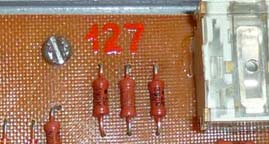 ..
.. ..
.. .
.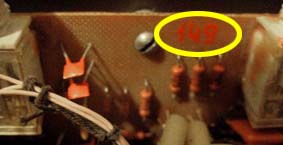 .
.
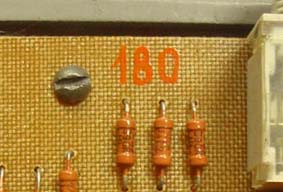 .
.  ..
..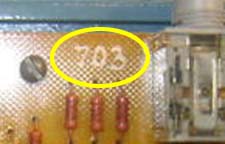 ..
..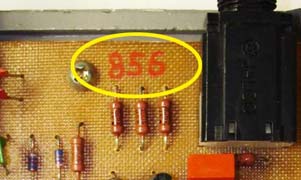 ..
..
 ..
..
CLONES OR SIMILAR PEDALS - The USA Bass Big Muff is very close to the Russian Big Muff tone. Stomp Under Foot CWM Fuzz, Blackout Effectors Musket, Montgomery Appliances Civil War Fuzz. See DiscoFreq's Effects Database for a thorough listing of all the Big Muff clones and variants throughout the years.
THE SOUND - These have the same circuit and sound as the first edition Red Army Overdrive and the Tall Font Green Russian. They have much more low end than the V3 and V6, have a less scooped mid range, and less distortion. All of the 1990s Sovtek Muffs (Civil Wars, Green Russians, Black Russians) had very similar component values, and had very similar sounds to each other, but the Civil War tone was special. It was very dark and bassy, but with a smooth and clear mid range, and a very musical clarity that stands out in a live band mix slightly better than most USA made Big Muffs. They are noticeably smoother and have less grit than the later Bubble Font Green Russians and Black Russian Big Muffs, which is probably why they are the most favored and desireable of all the Sovtek Big Muffs. Listen to Pink Floyd's Pulse live album for some great examples of lead tones using this pedal. The early Black Keys and Sonic Youth have other examples of this sound. They are also a favorite among bass players due to the low gain and huge, bass friendly bottom end they produce. The bass and treble of the tone varies slightly from unit to unit.
CLICK A PHOTO TO ENLARGE
Shown above - A Sovtek ad from Victor Morris Music showcasing the Mig 50 amplifier and current Sovtek line from 1994. Click to see the full ad. On the right is a Sovtek poster advertising the Mig amplifier.
Shown above - V7 Civil War Big Muffs with wood crate packaging. These show both the hockey puck and black arrow-top knobs seen on the Red Army Overdrive pedal, likely produced at the same time. The blue and gray paint schemes led to the nickname Civil War Big Muff, reminiscent of the US Civil War uniform colors and old west font used
Shown above - V7 Civil War big muff with blue box and circuit board serial numbered 703, using unmarked Russian transistors
Shown above - V7 Civil War Big Muffs showing two of the three different knobs types used, and the more common gray box bottom. Left to right - black hockey puck knobs, black tapered arrow-top knobs, and gray tapered arrow-top knobs.
Shown above - V7 Civil War Big Muff circuit boards. Identical to the first edition Red Army Overdrive board. Transistors were often metal can TO18 cases marked KT3102E, or unmarked Russian TO92 black plastic cases with white and green dots.
Shown above - (on left) V7 Civil War Big Muffs with the common large, dimple-topped knobs, also seen on later Green Russian Big Muffs. (on right) Have these Big Muffs been through the Civil War? It may look like it, but this form of corrosion was due to improperly sealing the anodized coating. Scuffing the surface made it worse, but over time these streaks and scuff marks could appear on their own, eating away through the coating. Though it may look awful, some Big Muff owners like the battle worn look, just like some guitarists love the look of old, beat up Fender Stratocasters and Les Pauls. Note that some pedals, like the one of the right, have a gold or brown colored halo around the printed graphics, casued by the ink bleeding into, and chemically altering the anodized finish over time.
Shown above - Sovtek dimple-topped knobs used on V7 Civil War, green, and black Russian Big Muffs. Early production had the indicator mark filled with white paint. The plastic battery door fit loosley and was prone to falling out. Some battery doors were molded in red color.
Shown above - V7 Civil War Big Muff interior and circuit boards. Note the hand written red serial numbers on some of the boards, and military style wiring harness.
Shown above - A pristine V7 Civil War Big Muff with common ridged knobs, serial #148. Note the missing plastic battery cover. They were poorly designed and prone to falling out, though the enclosure case it self was very sturdily designed. The photo on the bottom right shows the Russian made KT3102E transistors, one of several types that were used. There were four of the same type in this example.
THE LEGENDARY PINK FLOYD / DAVID GILMOUR "PULSE" BIG MUFF TONE - David Gilmour had a Civil War model Russian Big Muff for the recording of Pink Floyd's Division Bell studio album in 1993/94 and the subsequent Division Bell tour. An enormously popular live CD and film of the tour was released as Pulse. The core of David's signature 'Pulse' solo sound from this tour, much sought after among Gilmour enthusiasts, was created with the Civil War Big Muff, lightly driven/blended with a BK Butler Tube Driver for a slight gain boost and coloring, and a Fender Strat fitted with EMG-SA active pickups, utilizing the mid boost from the SPC tone control circuit. You can hear this tone on the songs Comfortably Numb, Sorrow, Time, On the Turning Away, and other tracks from Pulse. READ MORE
CLICK HEAR TO READ THE FULL DAVID GILMOUR BIG MUFF ARTICLE
SOUND CLIP 3 - Civil War Big Muff tone only and TC Nova delay
SOUND CLIP 4 - Civil War Big Muff with Boss CS-2 Compressor before it and TC Nova delay.
THE SOVTEK GREEN “CIVIL WAR” RUSSIAN BIG MUFF π - VERSION 7B
Circa 1993-1994
Circuit Board Number: BM-1-01.00.000
Circuit Designer: Based on Bob Myer's original circuit
True Bypass: No
Power: 9V battery only. To connect to a standard Boss type AC power supply, use a 9V battery adaptor like the 1 Spot CBAT. See POWER section below.
Enclosure Size: 6 1/2" x 5 1/16 " x 2 3/4"/ 165mm x 128mm x 70mm (not including rubber feet)
Packaging: Wood crate box with Russian lettering. Slightly different lettiering than the previous versions.
Place of Manufacture: St Petersburg, Russia
There were several variations on the Civil War Big Muff color schemes in the mid 1990's as the colors transitioned into the all-green enclosures most commonly seen on later Version 7C Big Muffs. These Green Civil War transition Muffs are very rare, but are essentially the same as the previous Civil War editions made in St. Petersburg, only with a slightly different, retooled enclosure box. These BMPs shipped in the same military style wood crate with Russian lettering as the previous Civil War Big Muffs.
GRAPHICS AND COLORS - Graphics were identical to previous Civil War Big Muffs, though the blue printing changed to black or dark blue. The top panel and bottom enclosure box color was changed to military green. The paint was very poor quality and chipped and scratched very easily. Some production have the silver anodized metal color and dark blue graphics printed on the underside of the lid, exactly the same as the previous V7A version. It is unclear if those originated as mis-prints or were simply extra stock lids left over from before the green color change was made. To save money, the St. Petersburg factory would not let any parts go to waste, so those lids were simply re-bent in reverse, painted green, and silk screened on the opposite side for the new all-green version.
CONTROLS / KNOBS - Most examples I have seen include gray plastic arrow-top knobs similar to the previous Russian Big Muffs and the Red Army Overdrive, but this was a different mold with less taper at the top. Foot switch sizes and shapes varied as on the previous Civil War Muffs.
CIRCUIT - The same circuit as the previous Civil War versions listed above, and the later Tall Font version that would follow.
- PCB board #BM-1-01.00.000.
- Transistors were unmarked Russian Silicon, almost always in the black plastic T092 case with white dots painted on top, and often on the the sides.
- Capacitors were almost alwasy film, although often flat, rectangular green ceramic caps were used. No electrolytics were used, other than the polarized 20-22uF power supply filter cap.
- Resistors were metal film with some carbon film used.
SERIAL NUMBER - As on the previous Civil War version, a hand drawn/painted serial number appears on most of the circuit boards, usually red or white. You can see a few examples in the photos below. I believe these are actual sequential numbers of the units as they were made. It is unlikely the number is sequential for the entire production of this version. The numbering was more likely repeated weekly or monthly. The highest number I have seen for this version is 1842. The numbers also appear on some of the early Green Russian Muffs that followed this version, and many of those numbers are lower, indicating the numbering was resequenced.
POWER - Power was from a 9V battery only. A red LED light shows when the circuit is on. To connect to a standard Boss type AC power supply, use a 9V 100mA battery adaptor like the 1 Spot CBAT. If you intend to add a standard 9V power jack that works with standard negative tip power supplies, you can find out where to wire the + and - wires by looking at the wiring diagram for your version, or simply follow the red(+) and black (-) wires from the battery snap.
ENCLOSURE BOX - The die cast Civil War enclosure box changed to a new style with ridged sides at the mold parting line for the Green Civil War version. They were also given a new plastic battery door, though it still fit very loosely and was prone to falling out like the previous door. If you look at the front end of the second edition box, there are two small notches to accommodate the new battery door design. These boxes were finished roughly with sloppy polishing and sloppy clean up of the mold flashing. It was made with cheap plastic input and output jacks like all previous Russians, which were soldered directly to the circuit board, with no nut to secure them to the box. They simply poked through two silver rimmed holes in the box. These had four rubber feeton the bottom. This style box carried on into the Green "Tall Font" version, which was the same pedal with a different silk screen.
CLONES OR SIMILAR PEDALS - Stomp Under Foot CWM Fuzz, Blackout Effectors Musket, Montgomery Appliances Civil War Fuzz. See DiscoFreq's Effects Database for a thorough listing of all the Big Muff clones and variants throughout the years.
THE SOUND - See the Version 7A Civil War Big Muff description above or the Version 7C Tall Font Green Russian. These had the same circuit and sound.
CLICK A PHOTO TO ENLARGE
Shown above - The enclosure changed to a new mold with ridged sides for this version. The plastic battery door changed to a slightly different shape and design also, but it still fit loosely and was prone to falling out. The gray arrow-top knobs were used again, but this was a different mold than before, with less taper at the top. The green color varies, and the paint was very poor quality, but gave a battle, worn tank-like appearance. The blue Civil War graphics are black on all examples of this version I have seen. This is a rare transition model to the Tall Font Green Russian Big Muff graphics that would follow. They shipped in a wood crate with slightly different graphics than the previous versions.
Shown above - V7 Green Civil War Big Muff made with the new second edition, all-green, die cast boxes with ridged sides. A rare transition model to the Tall Font Green Russian Big Muff that would follow. PCB serial #9
Shown above - Another example of the last V7 Green Civil War Big Muff with PCB serial #1523
VINTAGE GUITAR MAGAZINE - BIG MUFF PI ARTICLE FROM MARCH 1994
The March 1994 issue of Vintage Guitar Magazine contained an excellent article by effects guru Kevin Macy, called American Pi. At the time, this was one of the most comprehensive Big Muff Pi articles written, and one of the inspirations for this website. Although it was written in 1994, it focused solely on the vintage USA made Big Muff pedals, with barely a mention of the Russian made versions. Still, it is a very good, in depth article. Click on the image below to read the full article - used by permission of Vintage Guitar.
CONTINUE - HISTORY OF THE BIG MUFF PART 2 - The Sovtek Green Russian Big Muff
HISTORY OF THE BIG MUFF PART 1 (vintage USA)
HISTORY OF THE BIG MUFF PART 3 (modern USA)
© Kit Rae. This page is not authorized, affiliated, or associated with Electro Harmonix in any way
Website and contents ©2007 and ©2010 Kit Rae. All rights reserved. Linking to this website is allowed, but copying the text content is strictly prohibited without prior authorization. No part of this work may be reproduced, stored in a retrieval system, or transmitted in any other form, or by any means, electronic, mechanical, photocopying, recording, computer networking, or otherwise without prior permission in writing from the copyright holder(s).
Kit’s Secret Guitar, Gear, and Music Page
Guitar stuff, gear stuff, soundclips, videos, Gilmour/Pink Floyd stuff, photos and other goodies.
Contact: nasnandos @ kitrae.net (remove spaces around @ to email)
Copyright Kit Rae.
VISIT MY SWORDS, KNIVES and FANTASY ART WEBSITE www.kitrae.net





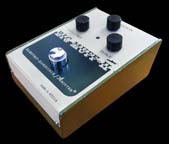
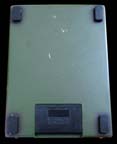






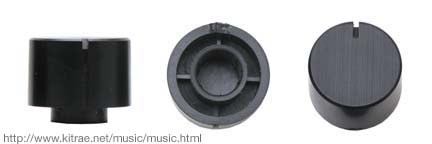













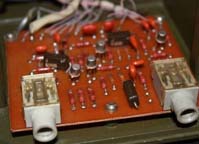






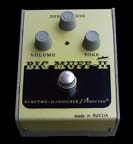










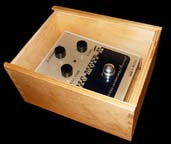






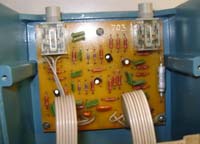

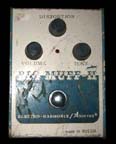




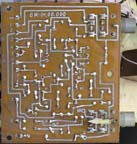


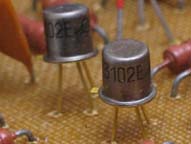


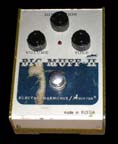









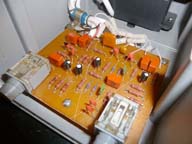

























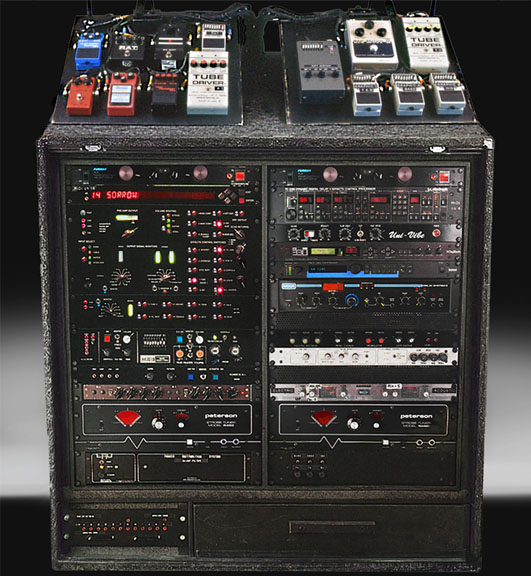


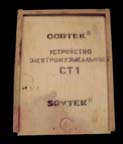



 .
. 

